

— Products —
 Consumer hotline +8618073152920
Consumer hotline +8618073152920 WhatsApp:+8615367865107
Address:Room 102, District D, Houhu Industrial Park, Yuelu District, Changsha City, Hunan Province, China
All products
Tipping Bucket Rain Gauge is a commonly used rain measurement device that records rainfall by tilting the container. It has a wide range of applications in the fields of meteorology, hydrology and agriculture, providing basic data for related research and applications. When installing and maintaining it, attention needs to be paid to matters such as suitable location selection, level calibration, regular maintenance and lightning protection.
Tel/WhatsApp:+8615367865107
Email:Arvin@niubol.com +Nearly 100 partner companies in more than 68 countries. We are committed to providing high-quality, practical products to meet your needs and help you solve problems. Our products comply with international standards and are certified with ISO, CE and RoHS.Product Details
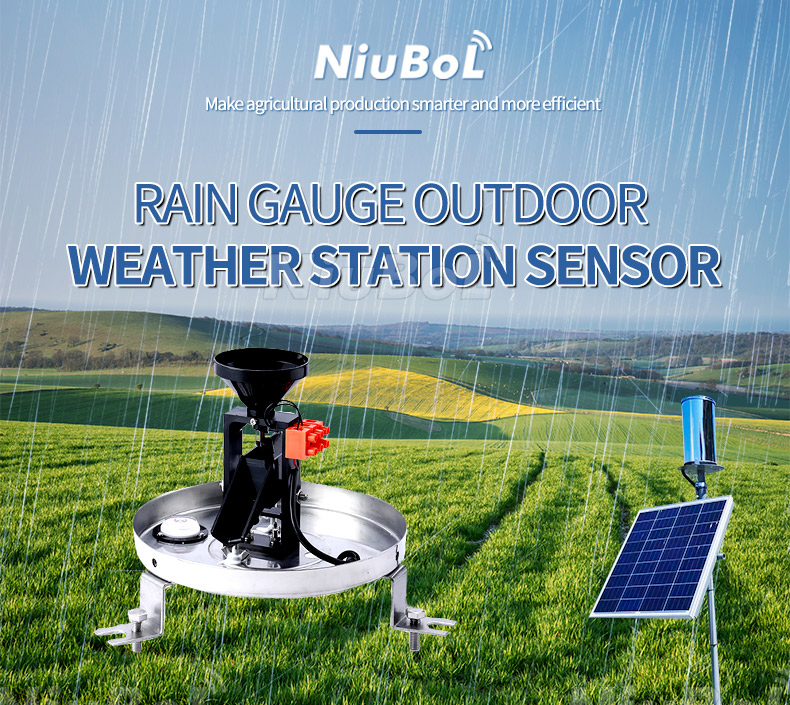
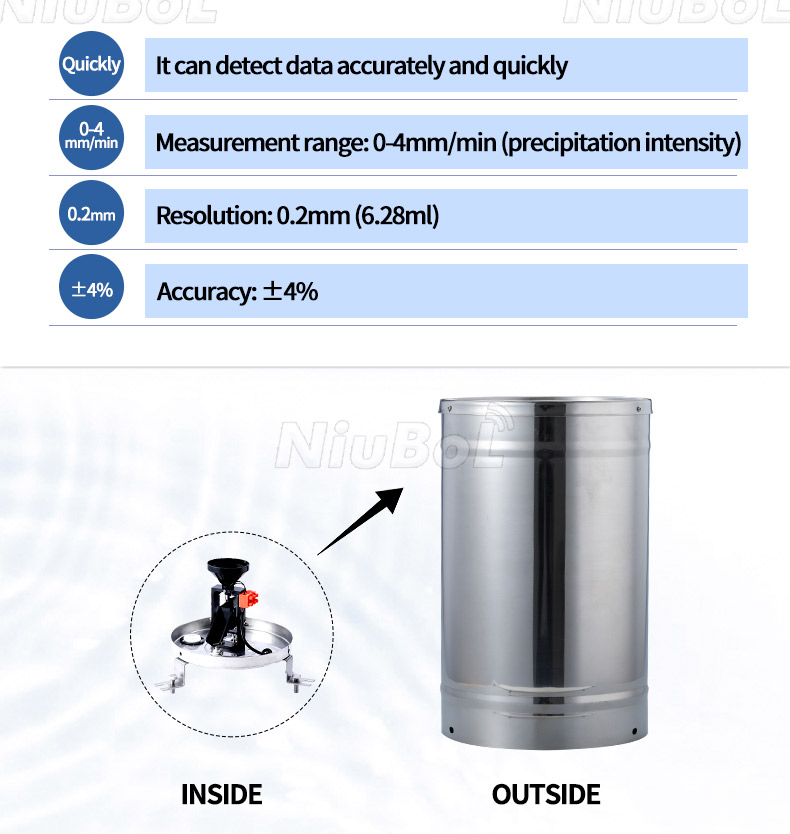
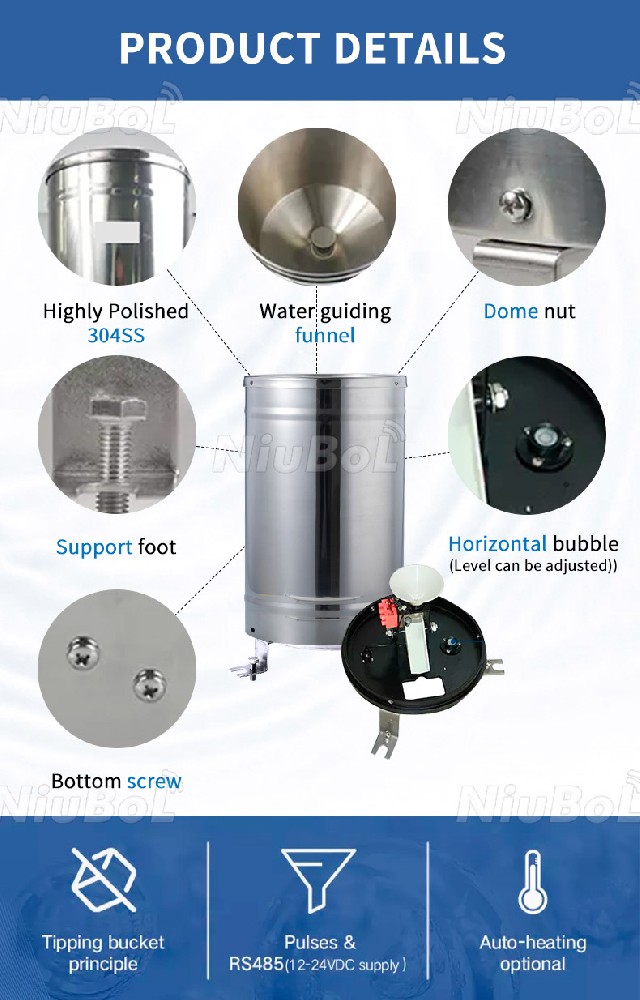
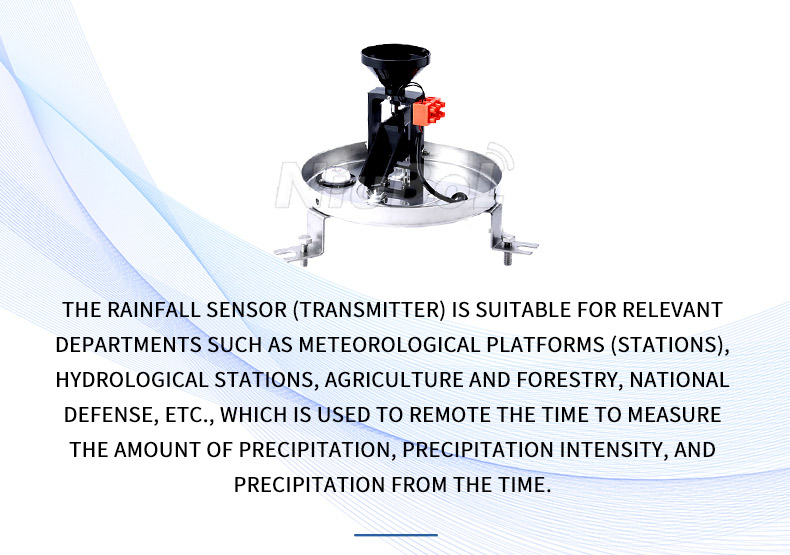
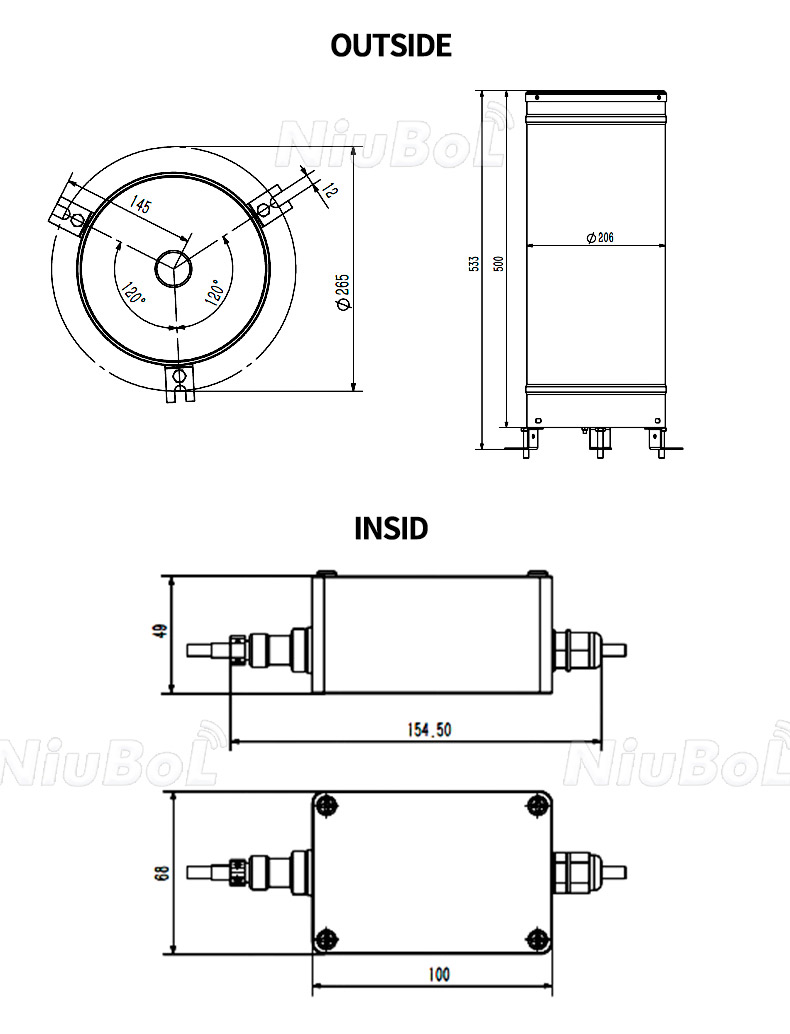
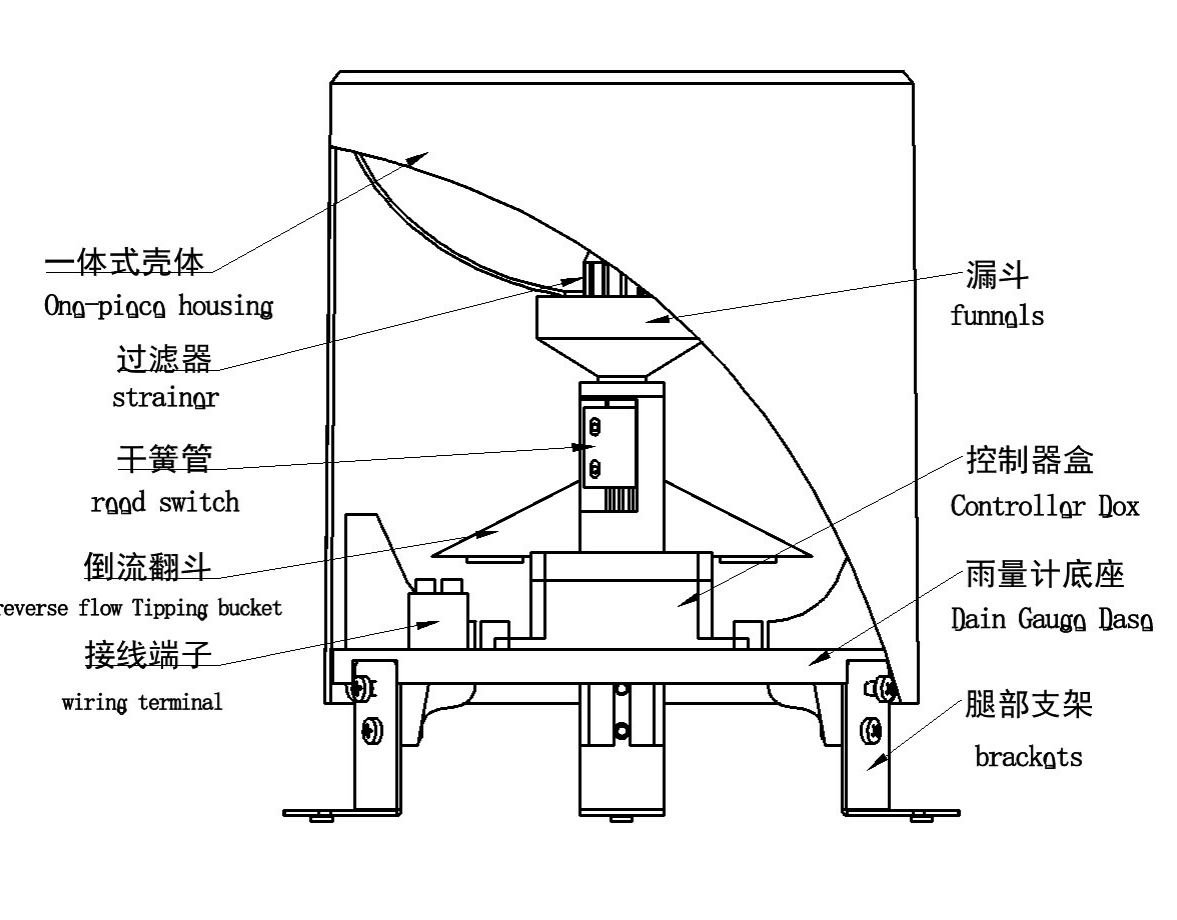
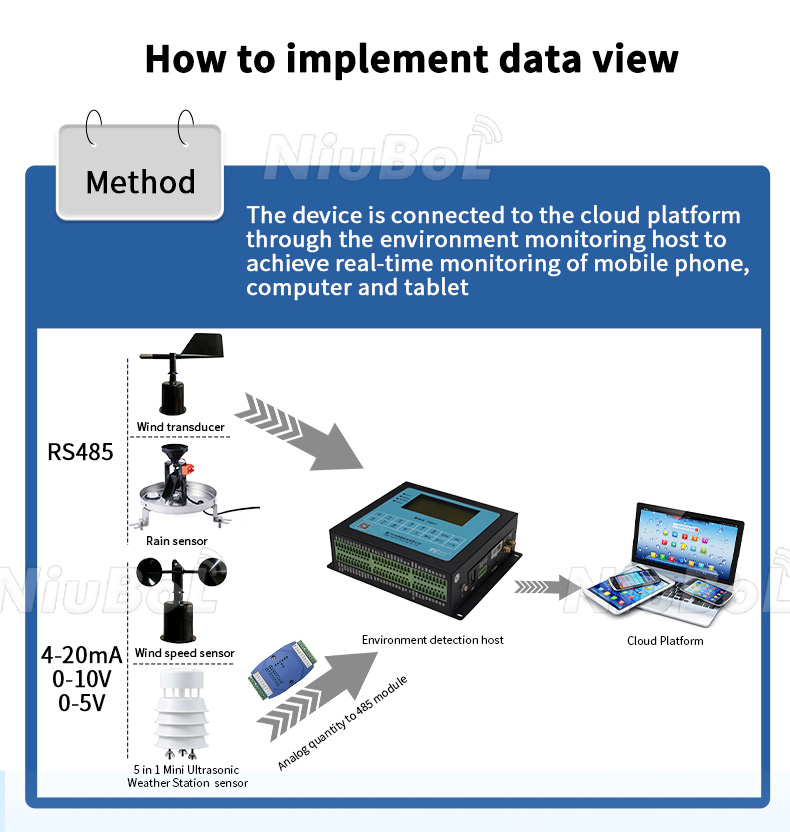
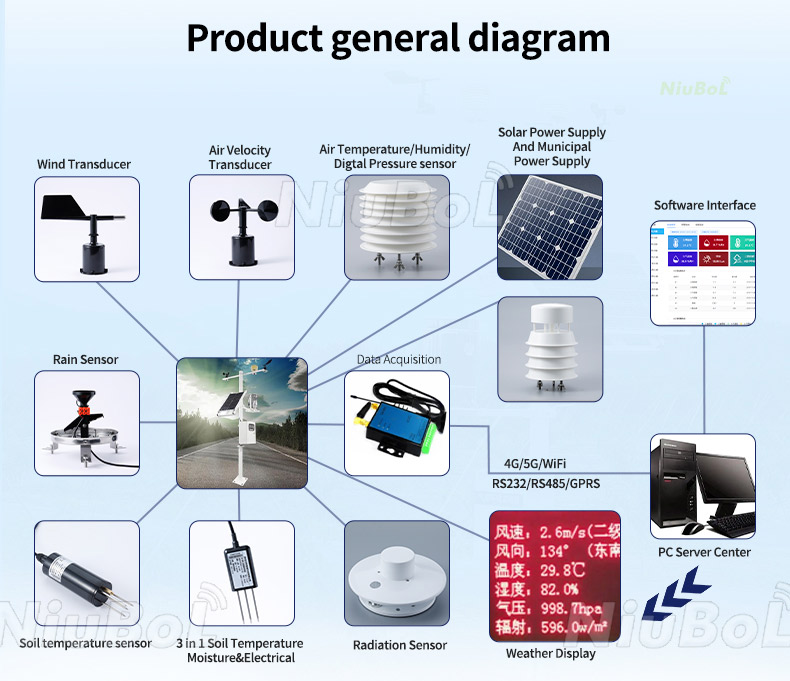
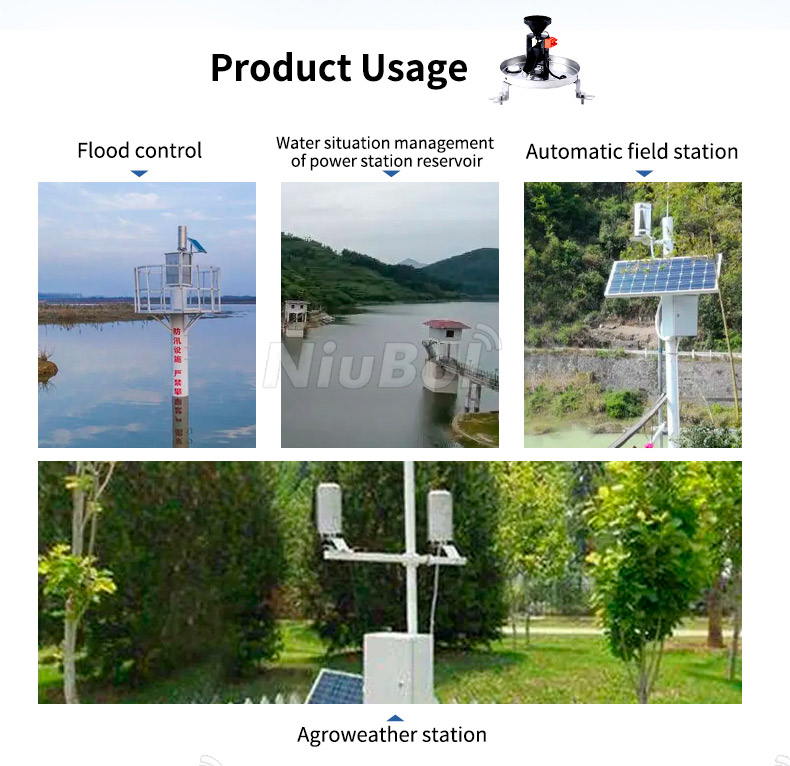
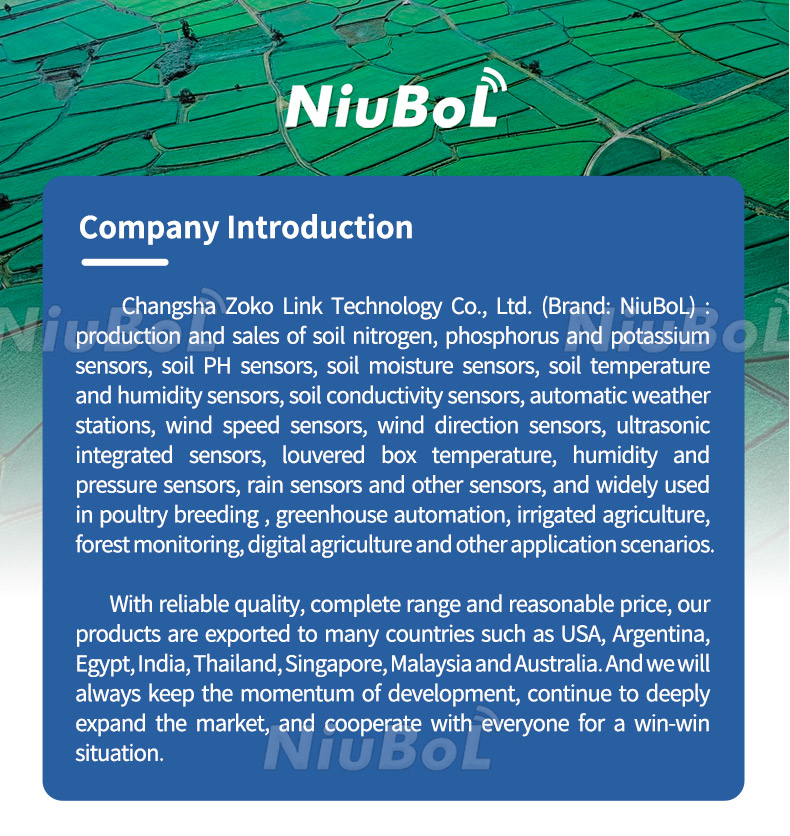
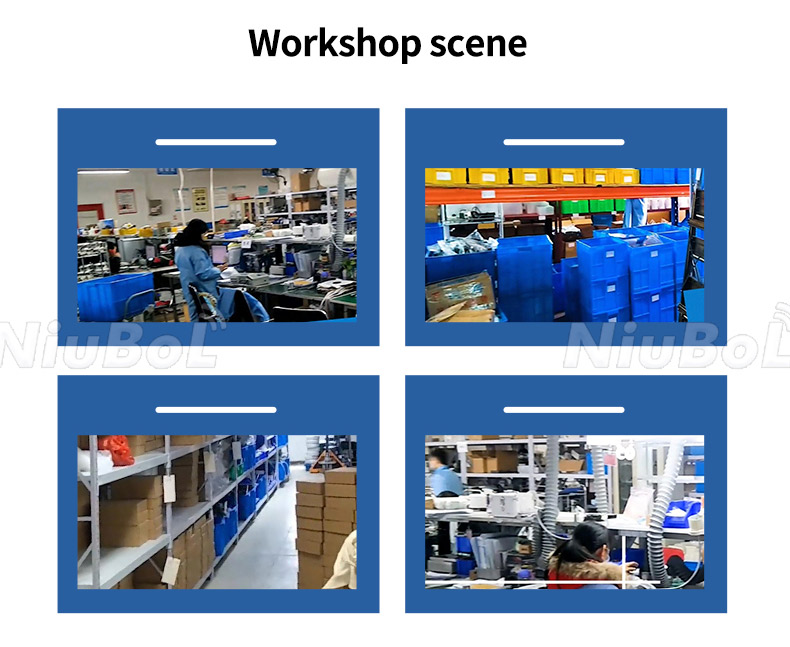
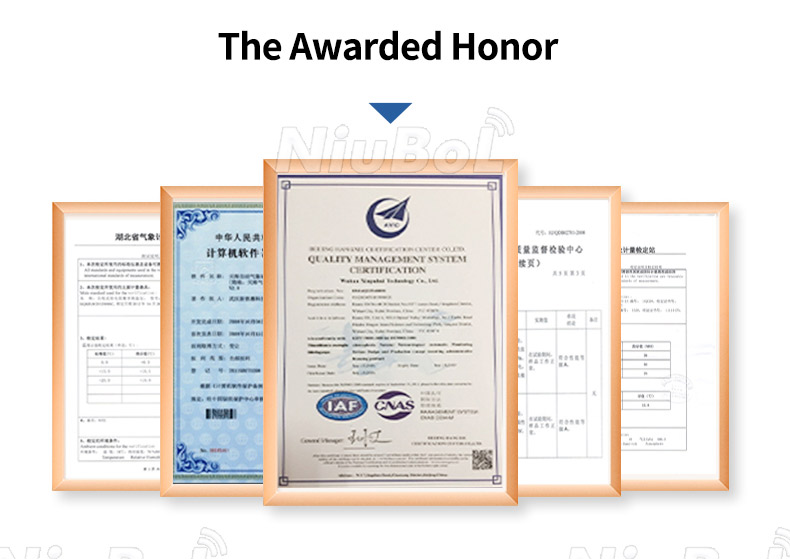
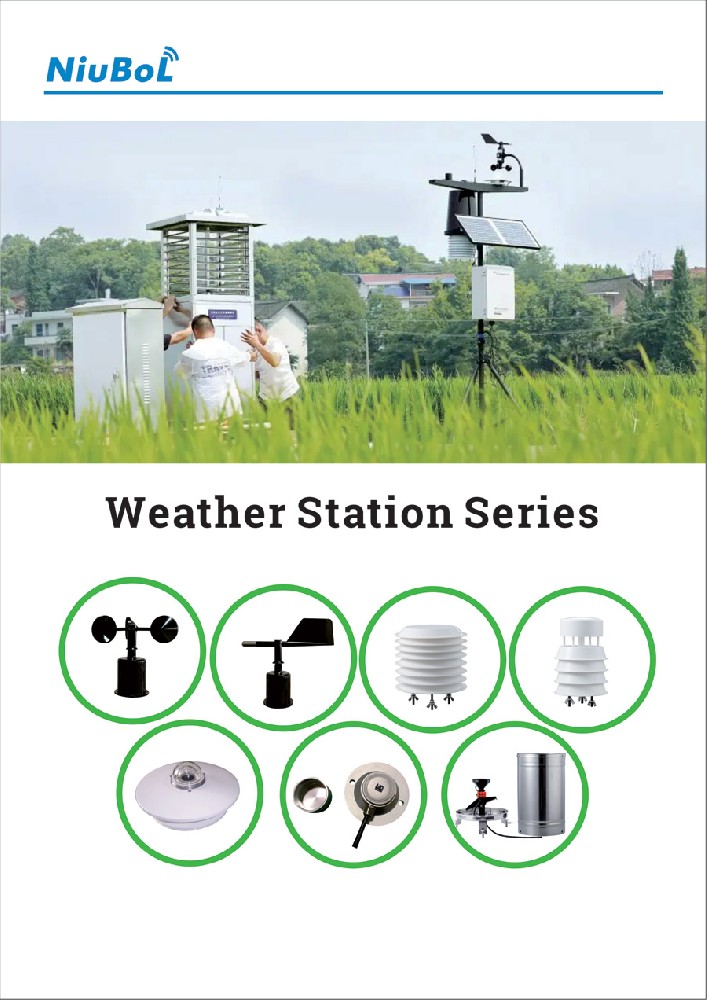
1. Tipping Bucket Rain Gauge (TBRG): This is a commonly used device to automatically measure rainfall, the working principle and application scenarios of which have been described in detail before.
2. Rain Gauge Stick: This is a simple manual measurement method. It usually consists of a vertical rod marked with a scale and a container. The Rain Gauge Stick is installed in an open area and when rainwater is collected in the container, the height of the water level in the container is read to obtain the amount of rainfall.
3. Measuring Cylinder Method: This method requires a long cylinder or bucket with a graduated scale. The cylinder is placed at a suitable location and rainwater is allowed to collect freely. The amount of rainfall can then be estimated by reading the change in water level in the tank.
4. Measuring rainwater collector and weighing method: This method uses a sophisticated rainwater collector and weighing device. The rainwater collector receives the rainfall and directs it into the weighing device. The weighing device measures the weight of the rainwater to determine the amount of rainfall.
5. Radar and Satellite Remote Sensing: Modern meteorological science uses radar and satellite remote sensing techniques to measure rainfall. Radar estimates the amount of rainfall by measuring the strength and frequency of the echo signals. Satellite remote sensing uses satellite images and data analysis to estimate rainfall.
Tipping Bucket Rain Gauge Products:
Tipping Bucket Rain Gauge is a commonly used rainfall measurement device which works as follows:
1. Structure: The Tipping Bucket Rain Gauge consists of a funnel-shaped collector with two containers. Each container has a small hole. When the rainwater accumulated in the container reaches a certain amount, the container will be tilted so that the other container receives the rainwater.
2. Working process: When rainwater drops on the collector, it will enter one of the containers through the funnel of the collector. When the rainwater in this container reaches a certain amount, the container will be tilted so that the rainwater flows out and another container receives the rainwater. At each tilt of the container, a microswitch triggers and records a rain event.
3. Principle of measurement: The amount of rainfall can be calculated by recording the number of times the container is tilted. Typically, each container tilt represents a fixed unit of rainfall, such as 0.2 mm or 0.01 inch.
Tipping Bucket Rain Gauge can be classified according to the material classification can be divided into two types of plastic and metal. Plastic types are generally lighter and easier to install for applications such as general weather observation. The metal type is more durable and is suitable for long term use or for observations in harsh environments.
1. Meteorological observation: Used to monitor and record rainfall, providing data support for weather forecasting and climate research.
2. Hydrological monitoring: Used to measure rainfall to help assess hydrological conditions such as surface runoff and flood risk.
3. Agricultural Irrigation: Used to monitor rainfall and assist in farm irrigation management decisions.
1. providing accurate rainfall data to provide a basis for research and forecasting in meteorology, hydrology and other fields.
2. monitoring rainfall to help assess needs in areas such as flood risk, water resource management and irrigated agriculture.
3. support climate change research by analysing climate trends through long-term observations of rainfall changes.
1. Installation location: Choose an open and unobstructed area to avoid the influence of trees, buildings, etc. on rainfall measurement.
2. Horizontal Calibration: Ensure that the device is installed horizontally to ensure accurate measurement of rainfall.
3. Regular Maintenance: Clean the collector and sensor to ensure that the equipment works properly and to avoid blockage by water and pollutants.
4. calibration and comparison: carry out calibration and comparison regularly to ensure the accuracy of measurement results.
5. Lightning protection: Provide the equipment with appropriate lightning protection to avoid damage to the equipment due to lightning strikes.
To sum up, Tipping Bucket Rain Gauge is a commonly used rain measurement device that records rainfall by tilting the container. It has a wide range of applications in the fields of meteorology, hydrology and agriculture, providing basic data for related research and applications. When installing and maintaining it, attention needs to be paid to matters such as suitable location selection, level calibration, regular maintenance and lightning protection.
Sensors & Weather Stations Catalog
Agriculture Sensors and Weather Stations Catalog-NiuBoL.pdf
Weather Stations Catalog-NiuBoL.pdf
Related recommendations
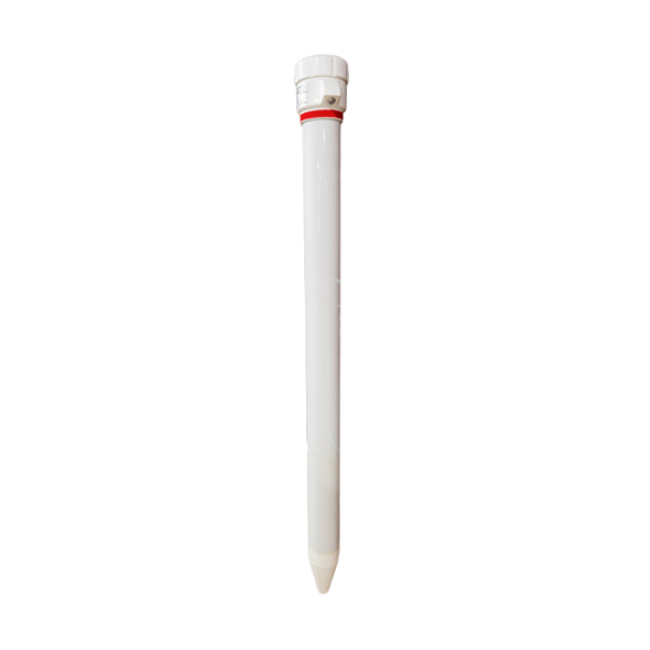 Multi-Depth Soil Sensor RS485
Multi-Depth Soil Sensor RS485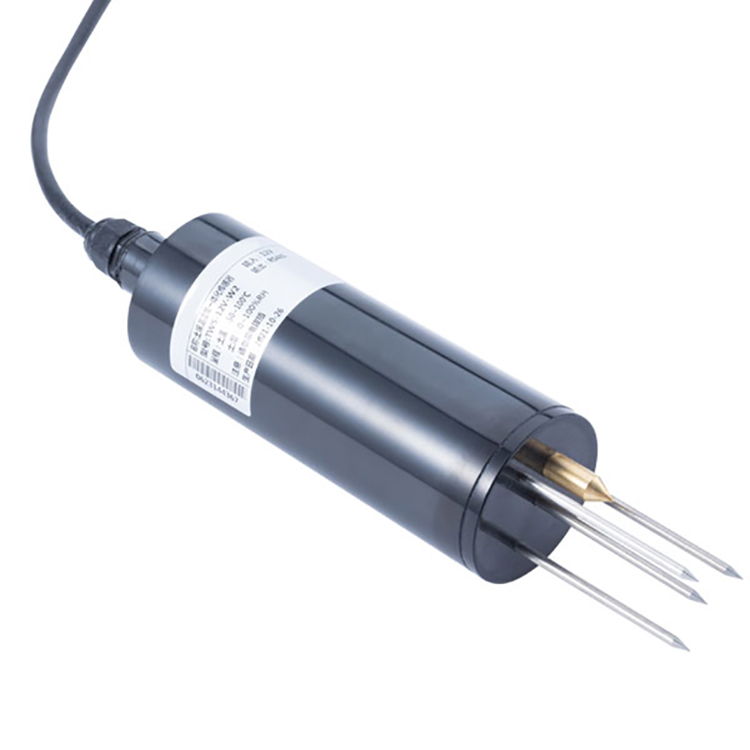 TDR Soil Moisture Sensor
TDR Soil Moisture Sensor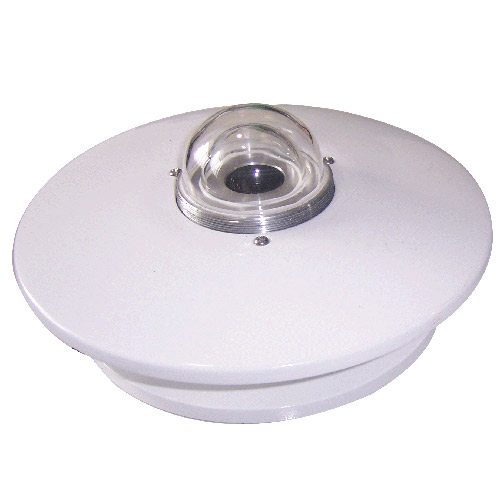 Pyranometer Solar Radiation Sensors
Pyranometer Solar Radiation Sensors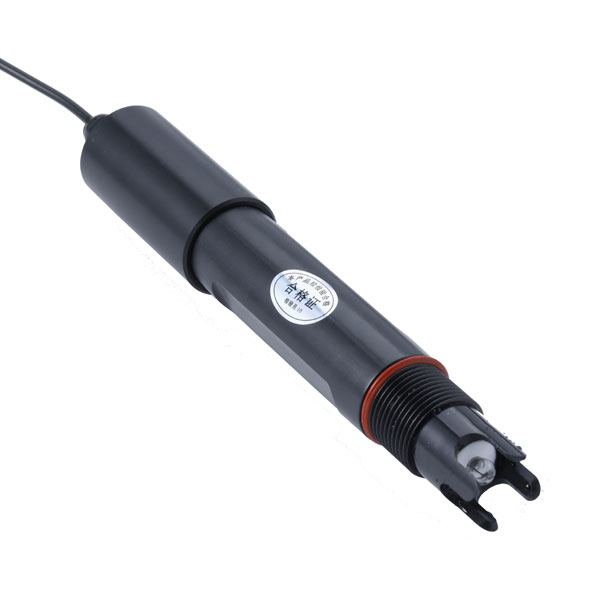 Soil ph sensor
Soil ph sensor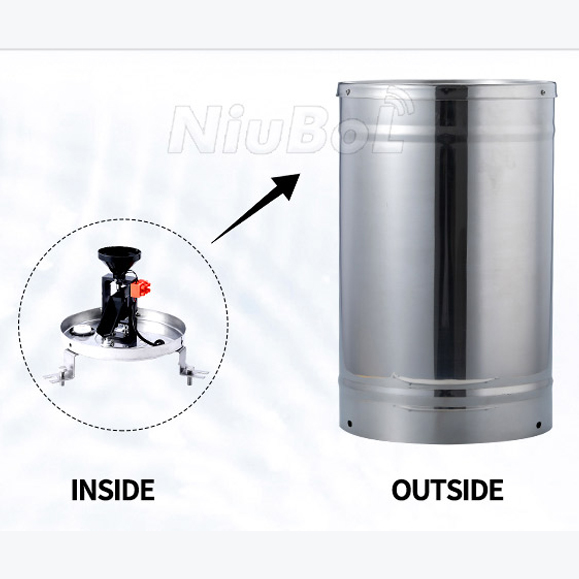 Tipping Bucket Rain Gauge
Tipping Bucket Rain Gauge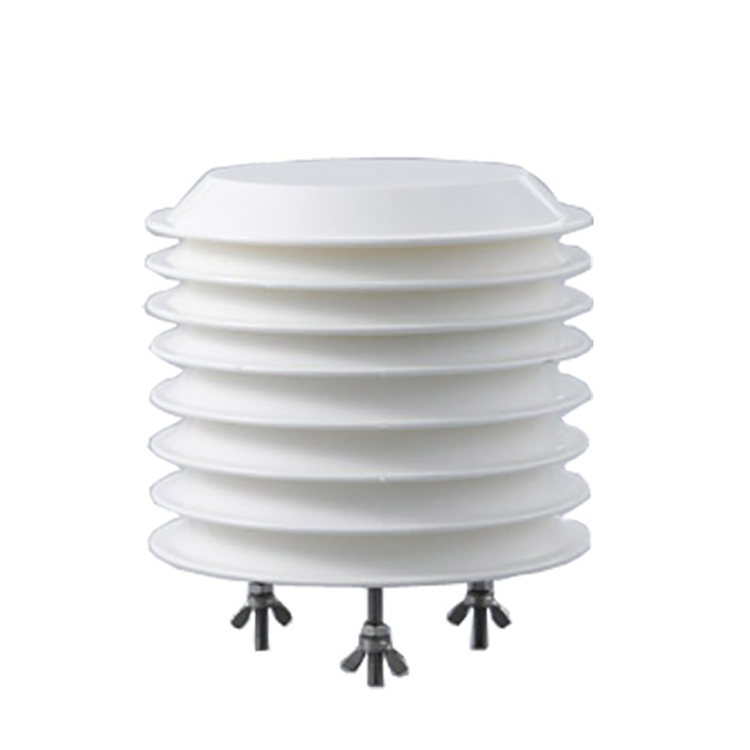 Air Temperature and Humidity Sensor
Air Temperature and Humidity Sensor
Screenshot, WhatsApp to identify the QR code
WhatsApp number:+8615367865107
(Click on WhatsApp to copy and add friends)
